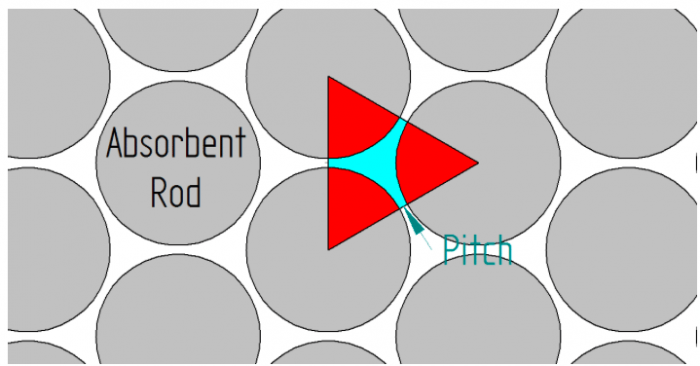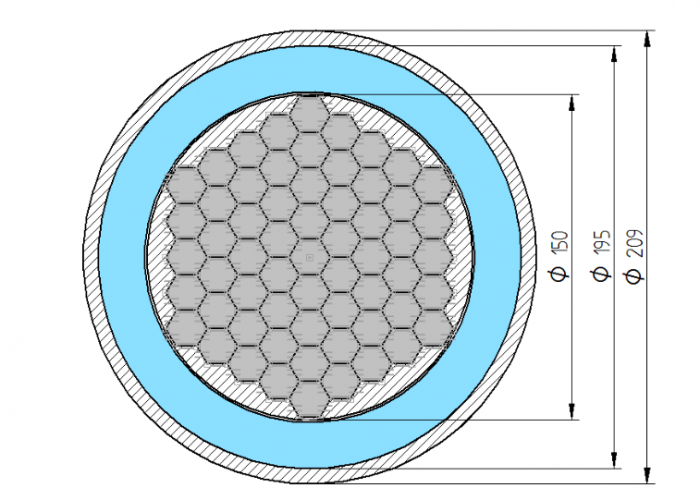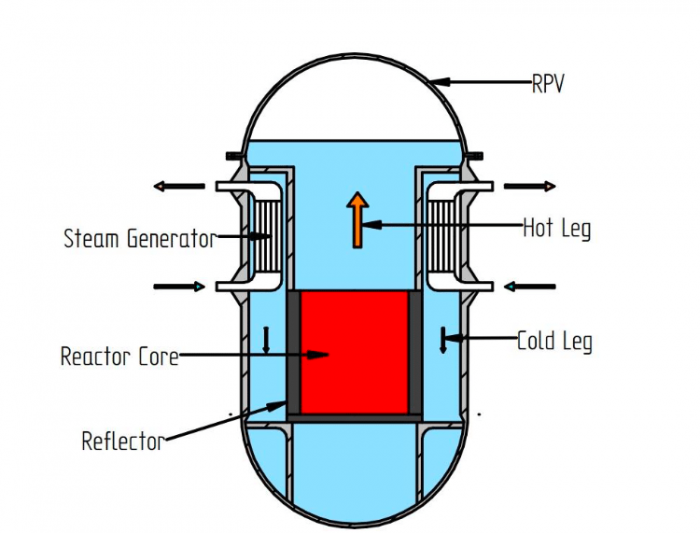
During the last two decades, Small and Medium Reactors (SMRs) have become a major player for future nuclear power generation. There are several projects dedicated to the design and construction of these reactors — for example: NuScale (U.S.A), mPower (B&W, U.S.A), KLT-40S (Russian Federation), SMART (South Korea) and CAREM (Argentine).
SMRs are able to provide more than electricity, including seawater desalinization as well as cogeneration power among its applications. Therefore, new projects on its complementary facilities are under development. Protection against radiation is a main concern to obtain a reliable design.
Nuclear Power Reactors generate large amounts of radiation. However, neutrons and gamma photons are of greater importance due to their higher energy and penetrability. It is required that these particles interact with specific materials to assure that they reduce their energy to safe levels for the reactor’s operators and the public in general. In this way, the operation of a nuclear reactor does not generate a negative impact on the community. Therefore, the design of biological shields is crucial to achieve this goal.
A radiation shielding is a material structure that is interposed between a radioactive source and a person so that the dose of radiation (energy that a radioactive particle deposits in a kilo of matter) does not reach unsafe values. As a general concept, shielding is divided into a primary and secondary shield. The primary shield provides sufficient attenuation of neutron flux to prevent inducted activity on surrounding structures by neutron capture. It also provides attenuation of photon flux generated in the reactor core by radioactive decay of fission products as well as neutron activation. The primary shield must provide an acceptable radiation dose rate during reactor shutdown, so that maintenance of reactor components could be accomplished. The secondary shield allows an acceptable dose rate for reactor staff and the public during normal reactor operation at full power and goes beyond the scope of this research.
Conventional materials for primary shields are steel, concrete, and Lead. Their high density makes them effective materials against gamma radiation. In the special case of concrete and steel, it is possible to incorporate special additives with high neutron absorption cross-section. The inelastic scattering on Iron cores present in steel allows for an efficient removal of fast neutrons. In the case of concrete, the weight fraction of Hydrogen could be increased by the addition of water. Then, fast neutron moderation is possible. Although these materials are widely validated in various applications, their use leads to thick and very heavy structures. Borated water is also used in combination with steel so that moderation of fast neutrons and thermal absorption reduces the total amount of neutrons dose rates.
In order to improve radiation protection on SMRs, a new design for primary radiation shielding based on Tungsten Carbide (WC) and Lead is presented. Tungsten Carbide is of particular interest since the presence of Carbon nuclei contributes to the moderation of fast neutrons flux, reducing the total dose rate. This material is not widely used as a shielding except in small high-energy source applications where space is restrictive or as specific parts where additional shielding is required in the same space allocation. In addition, its primary restrictions are high cost, difficulty in fabrication, and the limitation of availability in large sizes.
To avoid those problems, the design employs 8704 absorbing rods made of several WC pellets with a diameter of 17.05 mm. WC pellets have a stainless steel cladding to give structural support. Absorbing rods are placed in a triangular pitch as shown in figure 1.1. Rods interstitials are filled with Lead to prevent radiation streaming. Such a configuration meets an optimum agreement between shielding volume, weight, and dose rate. The structure weight is 150 MT where 68 MT belongs to WC.

Figure 1.1: Schematic model of triangular pitch rods arrangement for shielding. Republished with permission from Elsevier from https://doi.org/10.1016/j.anucene.2018.02.032
Weight and volume reduction, without increasing dose rate, allows to implement SMRs for floating power generation plants (e.g: icebreaker “Lenin,” cargo ship N.S. Savannah, cargo ship Otto Hahn, and icebreaker Marine Reactor X). This innovation on shielding material would allow to take electrical energy to geographically isolated regions at lower cost, due to the weight reduction.
To evaluate the design, a theoretical investigation was carried out, based on a hypothetical SMR reactor of 200 MWTh. The reactor integrates the basic aspects of this new generation of nuclear reactors. A schematic view of its design can be seen in figures 1.2 and 1.3.

Figure 1.2: Reactor core configuration and size. Units cm. Republished with permission from Elsevier from https://doi.org/10.1016/j.anucene.2018.02.032

Figure 1.3: Reactor components. Republished with permission from Elsevier from https://doi.org/10.1016/j.anucene.2018.02.032
As a research method, computational simulations based on the Monte Carlo method were used, which included the generation of radiation in the reactor nucleus and the generation of secondary radiation by neutron activation. This method allows to include detail in the calculations and to reproduce similar conditions to the real operation of the reactor.
Using numerical simulations, the performance of the Tungsten Carbide configuration was compared with a conventional heavy concrete shield. The results showed that the shield thickness was reduced by 88%, while the total weight was 30% lower.
Taking into account all the radiation sources (core reactor, neutron activation of impurities, and prompt photon production), the maximum dose rate in contact with the shield is 3 µSv/h.
Compared with other radiation sources, this result shows that during a year of work, a reactor operator would accumulate a maximum dose equivalent to a thorax tomography (<6 mSv).
Considering that the dose rate is reduced with the distance and decay time of the reactor, the design guarantees a safe operation with a more compact and lighter shielding. In addition, the design could be adapted for other types of reactors, including nuclear fusion reactors, where large quantities of fast neutrons are generated.
These findings are described in the article entitled Tungsten Carbide compact primary shielding for Small Medium Reactor, recently published in the journal Annals of Nuclear Energy. This work was conducted by M.A.N. Giménez and E.M. Lopasso from Bariloche Atomic Center, CNEA.








